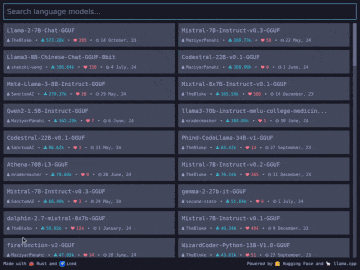11 releases
| 0.13.4 | Sep 21, 2024 |
|---|---|
| 0.13.3 | Sep 21, 2024 |
| 0.12.3 | Feb 28, 2024 |
| 0.1.3 | Aug 2, 2023 |
| 0.1.0 |
|
#469 in GUI
26,202 downloads per month
Used in 113 crates
(8 directly)
1MB
22K
SLoC
Features
- Simple, easy-to-use, batteries-included API
- Type-safe, reactive programming model
- Cross-platform support (Windows, macOS, Linux, and the Web)
- Responsive layout
- Built-in widgets (including text inputs, scrollables, and more!)
- Custom widget support (create your own!)
- Debug overlay with performance metrics
- First-class support for async actions (use futures!)
- Modular ecosystem split into reusable parts:
- A renderer-agnostic native runtime enabling integration with existing systems
- Two built-in renderers leveraging
wgpuandtiny-skiaiced_wgpusupporting Vulkan, Metal and DX12iced_tiny_skiaoffering a software alternative as a fallback
- A windowing shell
Iced is currently experimental software. Take a look at the roadmap and check out the issues.
Overview
Inspired by The Elm Architecture, Iced expects you to split user interfaces into four different concepts:
- State — the state of your application
- Messages — user interactions or meaningful events that you care about
- View logic — a way to display your state as widgets that may produce messages on user interaction
- Update logic — a way to react to messages and update your state
We can build something to see how this works! Let's say we want a simple counter that can be incremented and decremented using two buttons.
We start by modelling the state of our application:
#[derive(Default)]
struct Counter {
value: i32,
}
Next, we need to define the possible user interactions of our counter: the button presses. These interactions are our messages:
#[derive(Debug, Clone, Copy)]
pub enum Message {
Increment,
Decrement,
}
Now, let's show the actual counter by putting it all together in our view logic:
use iced::widget::{button, column, text, Column};
impl Counter {
pub fn view(&self) -> Column<Message> {
// We use a column: a simple vertical layout
column![
// The increment button. We tell it to produce an
// `Increment` message when pressed
button("+").on_press(Message::Increment),
// We show the value of the counter here
text(self.value).size(50),
// The decrement button. We tell it to produce a
// `Decrement` message when pressed
button("-").on_press(Message::Decrement),
]
}
}
Finally, we need to be able to react to any produced messages and change our state accordingly in our update logic:
impl Counter {
// ...
pub fn update(&mut self, message: Message) {
match message {
Message::Increment => {
self.value += 1;
}
Message::Decrement => {
self.value -= 1;
}
}
}
}
And that's everything! We just wrote a whole user interface. Let's run it:
fn main() -> iced::Result {
iced::run("A cool counter", Counter::update, Counter::view)
}
Iced will automatically:
- Take the result of our view logic and layout its widgets.
- Process events from our system and produce messages for our update logic.
- Draw the resulting user interface.
Read the book, the documentation, and the examples to learn more!
Implementation details
Iced was originally born as an attempt at bringing the simplicity of Elm and The Elm Architecture into Coffee, a 2D game library I am working on.
The core of the library was implemented during May 2019 in this pull request.
The first alpha version was eventually released as
a renderer-agnostic GUI library. The library did not provide a renderer and
implemented the current tour example on top of ggez, a game library.
Since then, the focus has shifted towards providing a batteries-included, end-user-oriented GUI library, while keeping the ecosystem modular.
Contributing / Feedback
If you want to contribute, please read our contributing guidelines for more details.
Feedback is also welcome! You can create a new topic in our Discourse forum or come chat to our Discord server.
Sponsors
The development of Iced is sponsored by the Cryptowatch team at Kraken.com
Dependencies
~20–53MB
~1M SLoC


